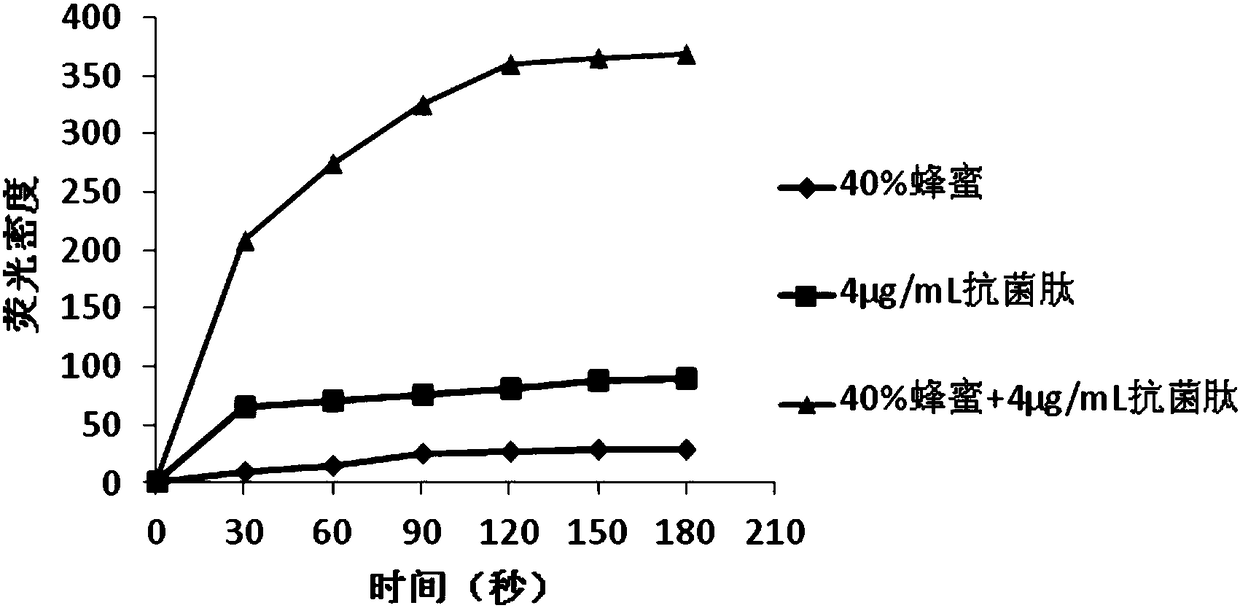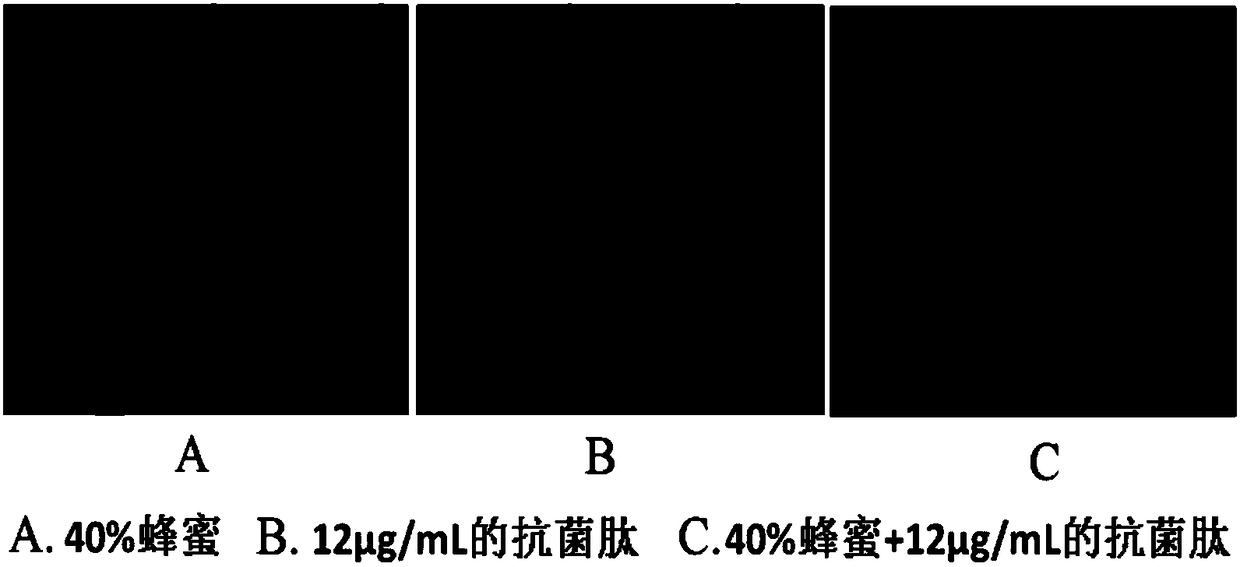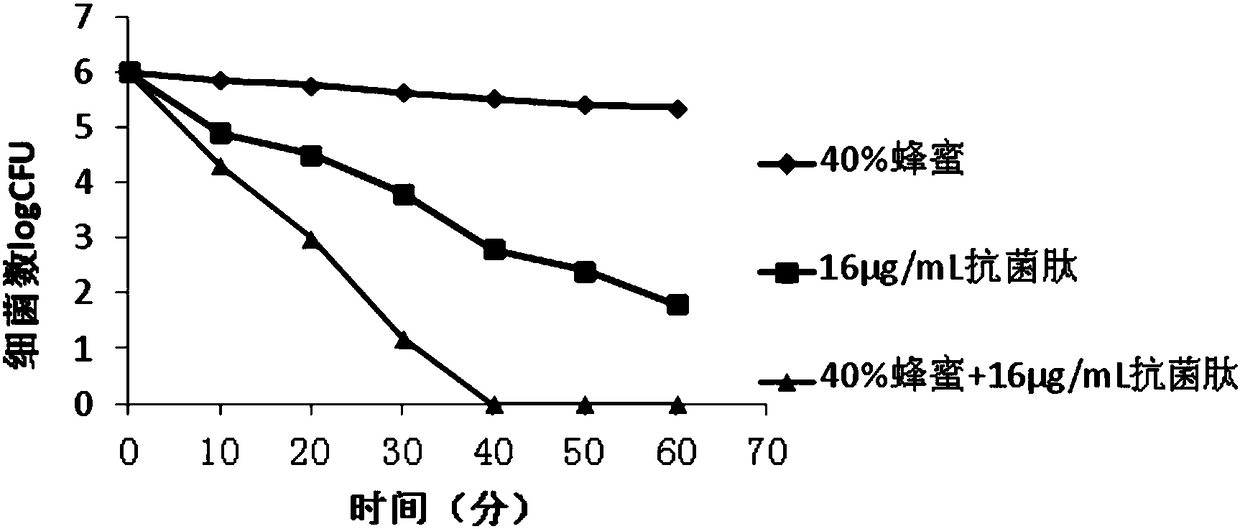Application of antibacterial peptide in preparing drugs for treating helicobacter pylori and drug composition
An anti-Helicobacter pylori, Helicobacter pylori technology, applied in the field of medicine, can solve the problems that antibiotics cannot cure Helicobacter pylori infection, the emergence of drug-resistant bacteria, high treatment costs, etc., to achieve the solution of antibiotic resistance and its side effects and good curative effect Effect
- Summary
- Abstract
- Description
- Claims
- Application Information
AI Technical Summary
Problems solved by technology
Method used
Image
Examples
experiment example 1
[0030] This experimental example provides an antibacterial peptide with anti-Helicobacter pylori activity, the amino acid sequence of which is shown in SEQ ID NO:1.
[0031] The screening of this antimicrobial peptide and the experimental process of anti-helicobacter pylori are as follows:
[0032] a. Screening of antimicrobial peptides: Antimicrobial peptides have their own unique antibacterial spectrum just like antibiotics. Not all antimicrobial peptides have antibacterial activity against Helicobacter pylori. The inventor screened out tens of thousands of antimicrobial peptides through experimental research. The target antibacterial peptide, the sequence is: GIGAS ILSAG KSALK GLAKG LAEHF AN, that is, the antibacterial peptide shown in SEQ ID NO: 1, denoted as BLP-1, and synthesized by chemical methods with a purity of 95%.
[0033] b. Helicobacter pylori culture and the determination of the number of bacteria: Prepare the culture medium, inoculate the test bacteria into th...
experiment example 2
[0040] This experimental example provides the anti-Helicobacter pylori activity test of the antibacterial peptide BLP-1 and the composition comprising the antibacterial peptide BLP-1:
[0041] A.1-Phenyl-naphthylamine (1-N-phenyl-naphthylamine, NPN) fluorescence test:
[0042] Test principle: 1-phenylnaphthylamine has weak fluorescence in aqueous solution, but when 1-phenylnaphthylamine penetrates into the hydrophobic environment of the bacterial cell wall outer membrane, its fluorescence increases. Therefore, according to the fluorescence intensity of 1-phenylnaphthylamine, the ability of each sample to penetrate the outer membrane of the Helicobacter pylori cell wall can be judged.
[0043] Test procedure: After centrifuging 50 mL of Helicobacter pylori in the logarithmic growth phase, the cells were collected and suspended in 5 mM N-2-hydroxyethylpiperazine-N'-2-sodium ethanesulfonate buffer (sodium N-2-hydroxyethylpiperazine -N'-2-ethanesulfonic acid, HEPES, pH7.2), prepa...
PUM
 Login to View More
Login to View More Abstract
Description
Claims
Application Information
 Login to View More
Login to View More - R&D
- Intellectual Property
- Life Sciences
- Materials
- Tech Scout
- Unparalleled Data Quality
- Higher Quality Content
- 60% Fewer Hallucinations
Browse by: Latest US Patents, China's latest patents, Technical Efficacy Thesaurus, Application Domain, Technology Topic, Popular Technical Reports.
© 2025 PatSnap. All rights reserved.Legal|Privacy policy|Modern Slavery Act Transparency Statement|Sitemap|About US| Contact US: help@patsnap.com



